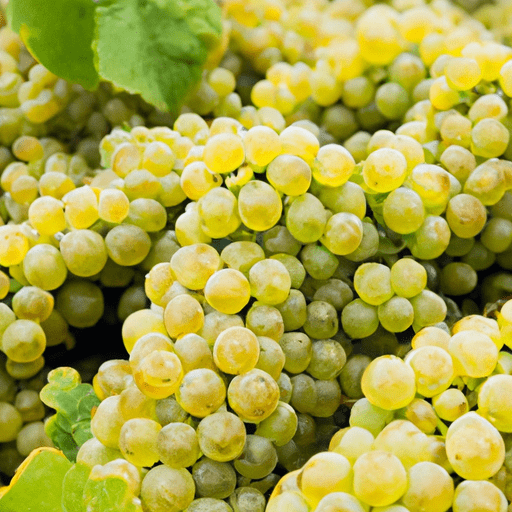Exploring the Delights of Chablis Wine in Cooking
When it comes to wines, few can rival the sharp, elegant notes of Chablis. Named after the picturesque town in Burgundy, France, Chablis wine is renowned for its unique characteristics that make it a favorite among wine enthusiasts and chefs alike. In this blog post, we will take a deep dive into the world of Chablis and explore its taste profile, common uses in cooking, nutritional value, and some intriguing history and facts that will surely enhance your appreciation for this exquisite wine.
Taste Profile and Characteristics
Chablis wine is made exclusively from the Chardonnay grape, grown in the Chablis region’s cool climate. This terroir imparts a distinctive character and flavor profile to the wine. Known for its crisp acidity, Chablis showcases a refreshingly dry, mineral-driven taste with vibrant citrus notes. Some varieties also exhibit subtle floral or apple aromas, adding complexity to the overall experience.
Common Uses in Cooking
Due to its delicate yet assertive flavor, Chablis wine serves as an essential ingredient in many traditional French dishes. Its acidity and complexity make it a wonderful choice for deglazing pans, creating beautifully balanced sauces. Whether you’re sautéing mushrooms, searing scallops, or preparing a creamy chicken dish, a splash of Chablis can elevate the flavors to new heights. Additionally, Chablis is the perfect complement to shellfish and pairs exceptionally well with oysters and other seafood delicacies, enhancing their briny complexity.
Nutritional Value and Health Benefits
Like other wines, Chablis does provide some nutritional value along with its delicious taste. It contains antioxidants, such as resveratrol, which have been associated with potential health benefits. Moderate consumption of Chablis wine, along with a balanced diet, can contribute to heart health and might offer some protection against certain forms of cancer. However, it’s important to remember that alcohol should always be consumed in moderation, and individual health circumstances may vary.
Fascinating History and Facts
Chablis is often referred to as the “Golden Wine” due to its pale golden color, reminiscent of sun-kissed fields of Burgundy.
The region of Chablis was historically known for red wine production until the phylloxera epidemic devastated the vineyards in the late 19th century. To revive the industry, winemakers shifted their focus to Chardonnay, which has now become synonymous with Chablis wine.
Chablis is classified into four distinct appellations, each highlighting a specific style and quality level – Petit Chablis, Chablis, Chablis Premier Cru, and Chablis Grand Cru. The Grand Cru wines, produced from the best vineyards, are particularly sought after and can age beautifully for years.
Chablis wine is renowned for its terroir-driven taste. The combination of limestone-rich soil and a cool climate shapes the unique flavors and imparts the signature mineral character loved by wine enthusiasts worldwide.
To truly appreciate Chablis wine, it is recommended to serve it slightly chilled (around 45-50°F) to enhance its vibrant acidity and preserve its delicate nuances.
So, whether you’re uncorking a bottle of Chablis to savor its splendor or incorporating it into your culinary endeavors, this exceptional wine offers a world of elegant flavors and endless possibilities. From delightful sauces to seafood pairings, Chablis adds a touch of sophistication to any dish. Raise your glass and savor the harmonious marriage of the Chardonnay grape and the captivating terroir of Chablis – a delightful indulgence for the discerning wine and food lover.
Cheers! 🍷
Origin of Chablis Wine: Chablis wine is produced in the Chablis region, located in the northern part of the Burgundy wine region in France. It is made exclusively from Chardonnay grapes grown in this region.
Common Uses of Chablis Wine: Chablis wine is primarily enjoyed as a dry white wine. It is often served chilled and pairs well with seafood, particularly oysters, as well as light poultry dishes and creamy sauces.
Nutritional Benefits of Chablis Wine: Like other wines made from grapes, Chablis wine contains a range of nutrients. It provides small amounts of vitamins and minerals, including potassium, magnesium, and various B-vitamins. However, it is important to note that the nutritional benefits are relatively low due to the small serving size typically consumed.
Unique Properties of Chablis Wine: One notable feature of Chablis wine is its distinctive taste profile. Its cool climate growing conditions contribute to the wine’s high acidity, which gives it a crisp, refreshing flavor. Chardonnay grapes from the Chablis region tend to have less fruity and oaky characteristics compared to Chardonnay wines from warmer regions, resulting in a more mineral-driven and nuanced flavor profile.
Historical Significance of Chablis Wine: Chablis has a long history of winemaking dating back to ancient Roman times. Over the centuries, it has become renowned for its unique terroir, defined by the ancient Kimmeridgian soils. Chablis wine gained international recognition in the 19th century and has since become one of the most renowned and influential white wines in the world. The region’s winemaking traditions and reputation for quality continue to be highly regarded today.




Use the share button below if you liked it.
It makes me smile, when I see it.